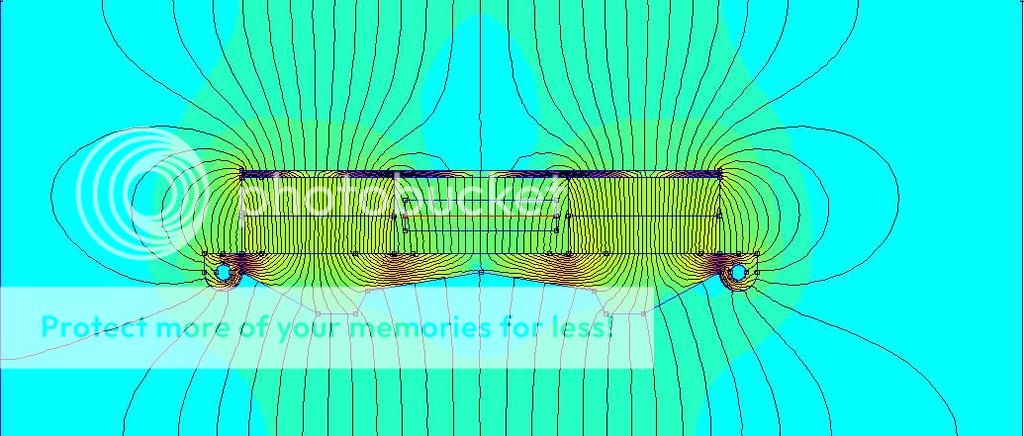Sorry. Copy and paste error.#799=140cm?
//
But the title on the actual plot is correct as it is programmatically enter.
Sorry, it is not mine to share.
I suspected as much.
Now I have to do some hunting.
Someone, somewhere has posted such a script and I can probably run it on octave to.
I'm tying together a bunch of opensource FEA and CAD applications into a comprehensive driver design suite.
It's proving to be an interesting adventure.
Thanks for your answer solhaga.
Hi Solhaga , so a translation from a post of mine at a time I should be asleep  bottom line was why do you keep the same magnet gap , when you go that large I can't imagine you need the spl or surface area ?
bottom line was why do you keep the same magnet gap , when you go that large I can't imagine you need the spl or surface area ?
Or do you try to get even lower?
Since going larger vertical does change res but Foulding will be harder and harder and it wont change the res as much is as pleat depth as you already know of course.
Could be fun that much efficiency but my thoughts would be.
Smaller gap cheaper magnets since you need allot more in the vertical direction. A somewhat better horizontal dispersion.
a somewhat smoother magnetic field .
Less dangerous when using soooo much strong magnets on a long bar or iron.
less change of bending it all.
Just a few reasons why I would think you might change the original design when going 140cm
Looking forward to the rest of the project !! And nice Simms !!
Or do you try to get even lower?
Since going larger vertical does change res but Foulding will be harder and harder and it wont change the res as much is as pleat depth as you already know of course.
Could be fun that much efficiency but my thoughts would be.
Smaller gap cheaper magnets since you need allot more in the vertical direction. A somewhat better horizontal dispersion.
a somewhat smoother magnetic field .
Less dangerous when using soooo much strong magnets on a long bar or iron.
less change of bending it all.
Just a few reasons why I would think you might change the original design when going 140cm
Looking forward to the rest of the project !! And nice Simms !!
Last edited:
If you make the membrane less than 60mm wide you will be pushing up the high frequency roll off. If you are happy with what you have, the wider membrane will give you more surface area for the low end response. It's a trade of more high frequency or more low frequency.
I am not sure resonance is dictated mostly by pleat depth , not so much how many pleats you have. At least resonance wise. Surface area wise it is a different story Sind more pleats have more surface area. But since you go more then 3 times as high you won't lack surface area. Another thing is baffle it provides, but that can be easy taken care of I can imagine
Last edited:
I am not sure resonance is dictated mostly by pleat depth , not so much how many pleats you have. At least resonance wise. Surface area wise it is a different story Sind more pleats have more surface area. But since you go more then 3 times as high you won't lack surface area. Another thing is baffle it provides, but that can be easy taken care of I can imagineespecially when used on these horns
I think original res was already down to 300 or less , I'm pretty sure you won't use it much lower. As benefit you get wider horizontal dispersion something you should not take lightly with a 60 mm membrane , sins it will beam pretty premature. A tweeter never exceeds 1 inch and that's even a big one . That's the fun of amts I believe you make a high disperion driver compared to a completely unfolded membrane. High dispersion while going low all in a rather small package

I agree with you, WrineX.
In fact, with the current mounting I use, the source will only be 2,5 cm.
And that's sub inch!
Sometimes doing a little calculation of wavelengths of frequency can be advantageous. 25mm is roughly 10 kilohertz.
With a dome that is the point where you hope you can encounter a little decoupling so you have a clean signal.
On a folded membrane it is not quite the same.
Pleat depth has more of an influence on the high frequency output. But even then you can suffer some cancellation losses with an excessive width from edge to edge. Edges from the motor structure then covering the diaphragm and then the opposite edge of the motor structure.
You guys already know this. Of that I am positive.
With a dome that is the point where you hope you can encounter a little decoupling so you have a clean signal.
On a folded membrane it is not quite the same.
Pleat depth has more of an influence on the high frequency output. But even then you can suffer some cancellation losses with an excessive width from edge to edge. Edges from the motor structure then covering the diaphragm and then the opposite edge of the motor structure.
You guys already know this. Of that I am positive.
Sometimes doing a little calculation of wavelengths of frequency can be advantageous. 25mm is roughly 10 kilohertz.
With a dome that is the point where you hope you can encounter a little decoupling so you have a clean signal.
On a folded membrane it is not quite the same.
Pleat depth has more of an influence on the high frequency output. But even then you can suffer some cancellation losses with an excessive width from edge to edge. Edges from the motor structure then covering the diaphragm and then the opposite edge of the motor structure.
You guys already know this. Of that I am positive.
Yes, I will for sure look over my old measurements on different widths of the membrane.
As far as I recall it though, it is the width and depth of the pleats that determines the frequency response.
I will try to build this loudspeaker without the waveguide; just as narrow as the motor structure allows.
Pleat depth up to half a wavelength of the highest frequency you want to reach are possible , this gives the lowest res possible without creating phasing issues. So +- 8-9 mm max. Width will dictate roll of of axis only.
having higher dispersion will balance the high spl at high freq compared to lower frequency, at further distances, If you measure a panel up close they both would be flat (. High dispersion and low dispersion) In the end I think it's a trick to get as low with the smallest width possible and with no phase issues from pleat depth , so under 1 inch and max 7,8 mm depth. And finally you can still influence res width weight , but that hurts efficiency and maybe high frequency , altrough weight vs high frequency. Did not work out for me as normally would when using Mylar in a Esl, the membrane can be much heavier in a amt without having the drop off you would see in an Esl with that weight.
Any one noticed that ?
having higher dispersion will balance the high spl at high freq compared to lower frequency, at further distances, If you measure a panel up close they both would be flat (. High dispersion and low dispersion) In the end I think it's a trick to get as low with the smallest width possible and with no phase issues from pleat depth , so under 1 inch and max 7,8 mm depth. And finally you can still influence res width weight , but that hurts efficiency and maybe high frequency , altrough weight vs high frequency. Did not work out for me as normally would when using Mylar in a Esl, the membrane can be much heavier in a amt without having the drop off you would see in an Esl with that weight.
Any one noticed that ?
Last edited:
That is going to be one efficient system !!!! With 1,4 meter that might even. Break records
Nah, been doing some more simulations and sorry to the say the long line source is no more.
The original AMT mk II:
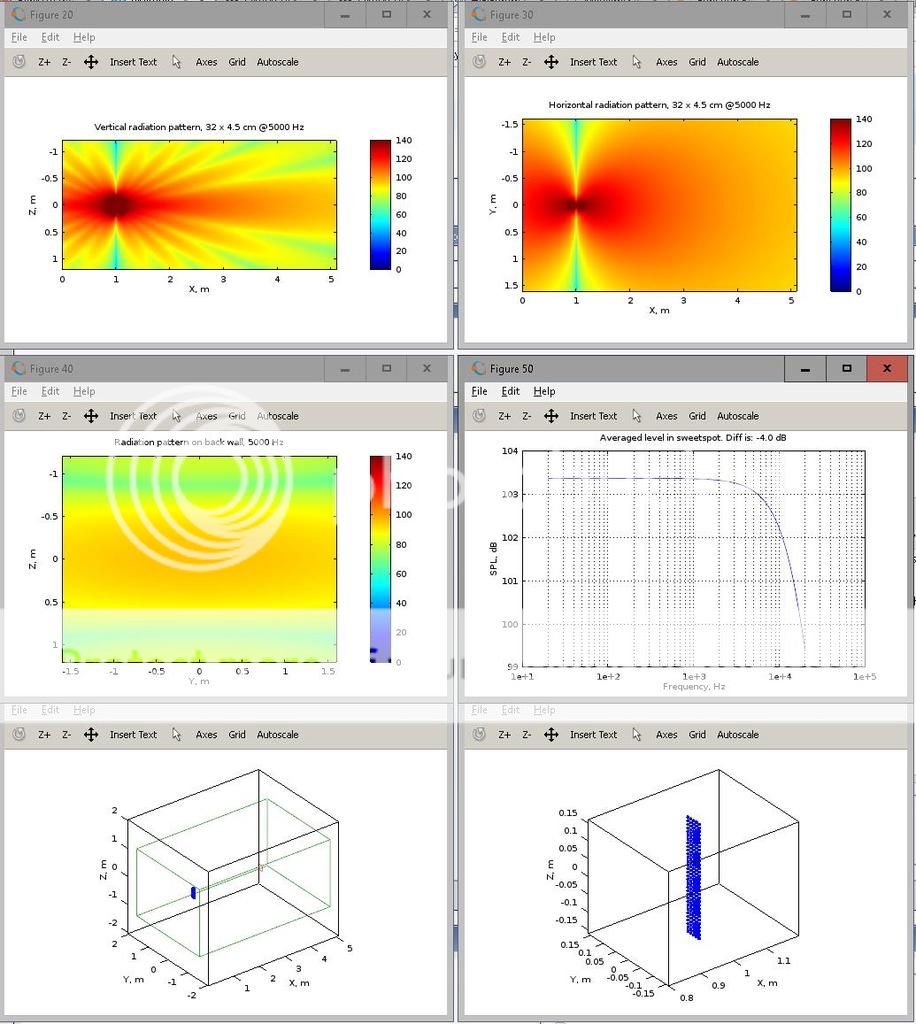
(The two last ones shows the source and the sweetspot in the room and the dimensions of the source)
A line source version:
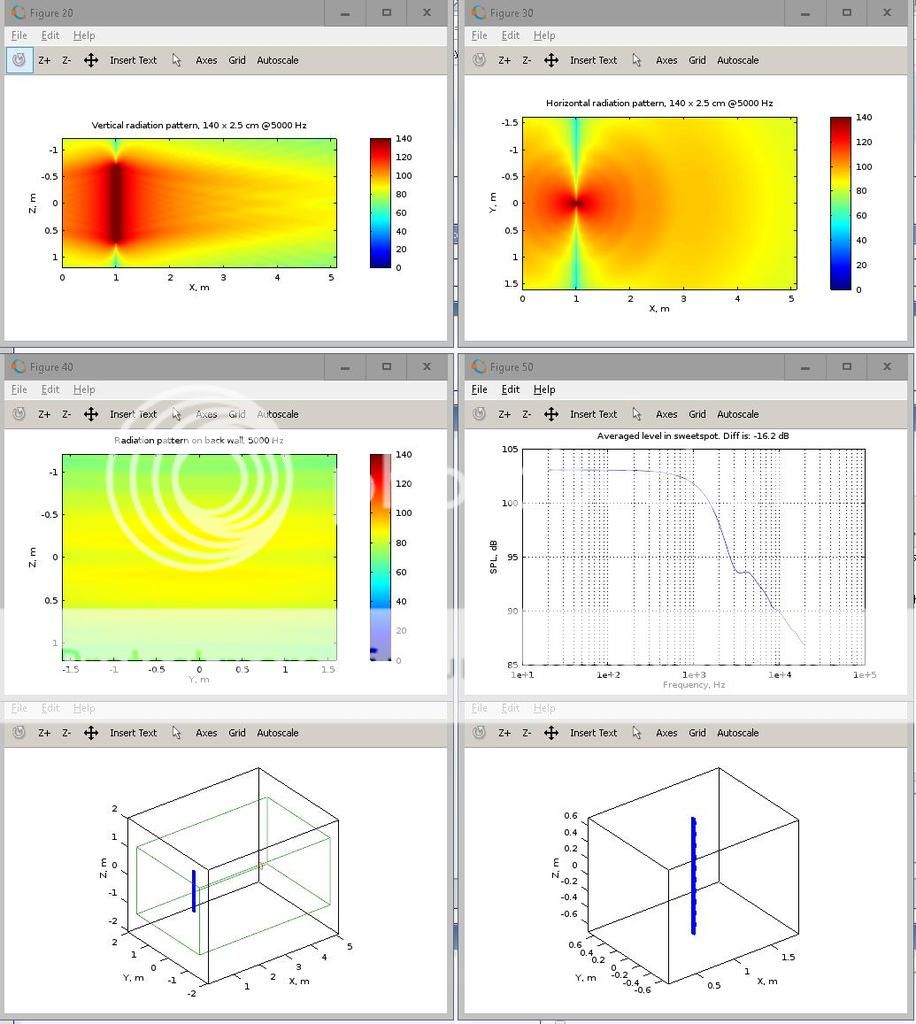
A short and narrow version:
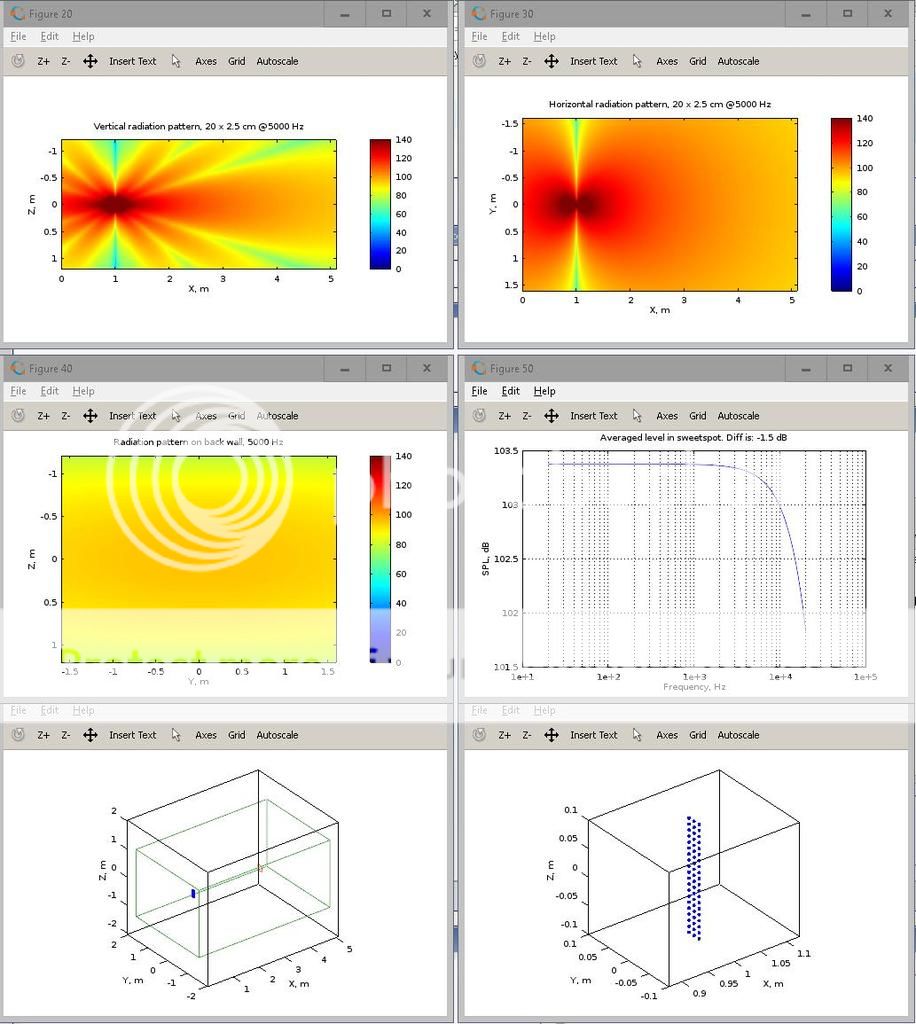
Dispersion patterns for the short and narrow version at different frequencies:

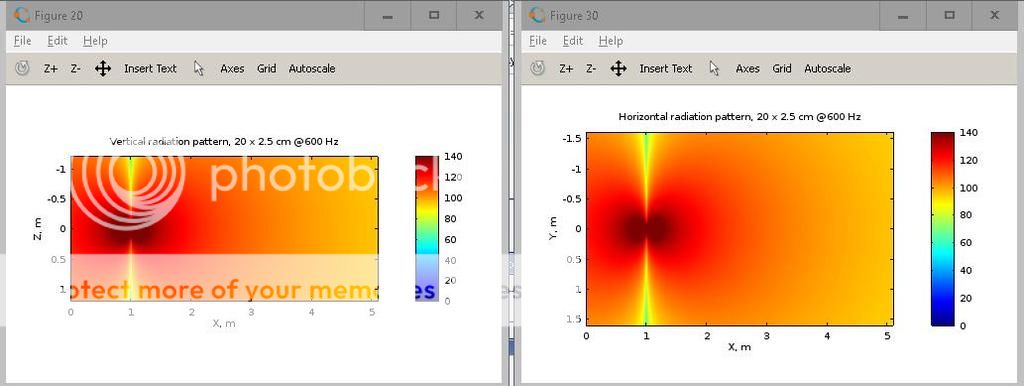
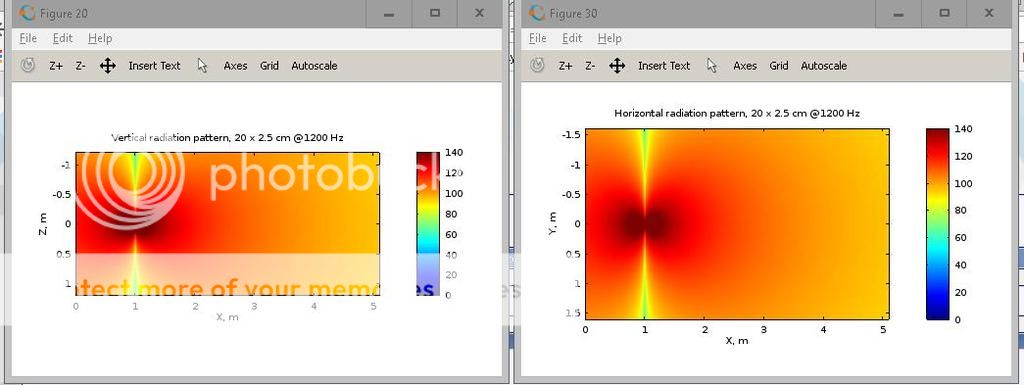
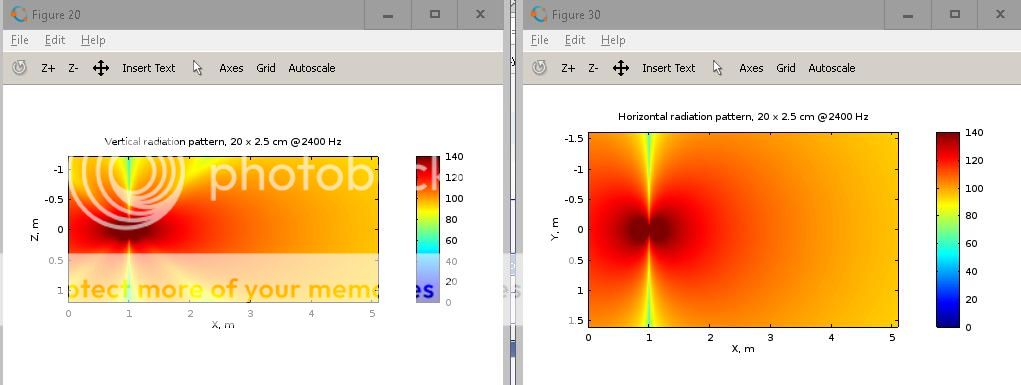
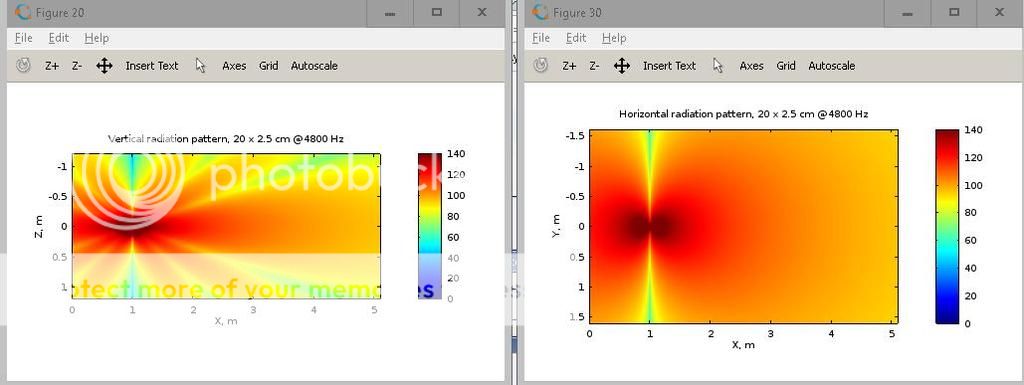

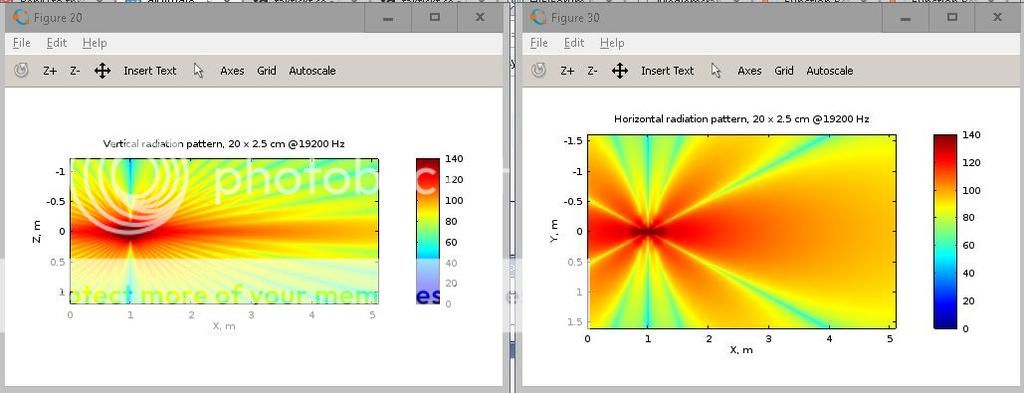
The short and narrow version looks good to be. Can't probably make it any shorter, SPL will be too low.
Last edited:
Nah, been doing some more simulations and sorry to the say the long line source is no more.
The original AMT mk II:

(The two last ones shows the source and the sweetspot in the room and the dimensions of the source)
A line source version:

A short and narrow version:

Dispersion patterns for the short and narrow version at different frequencies:







The short and narrow version looks good to be. Can't probably make it any shorter, SPL will be too low.
nice to see the sim !! we knew dispersion would be best if you could make both dimension small, only reason for taking line is less los of dB at doubling distance, and being able to go low and get high spl without having low dispersion
- Status
- This old topic is closed. If you want to reopen this topic, contact a moderator using the "Report Post" button.
- Home
- Loudspeakers
- Planars & Exotics
- Yet another DIY AMT
